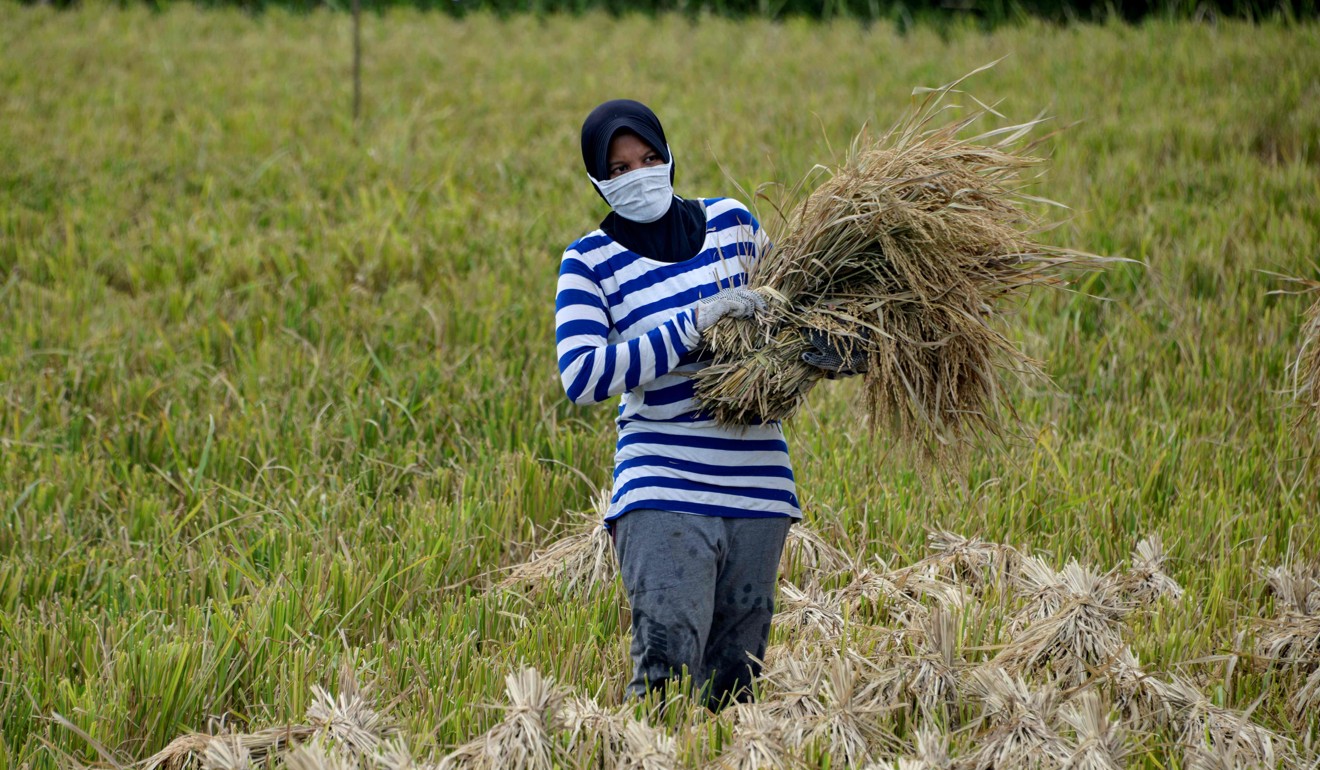
To feed a hungry nation, Indonesia can follow China’s blueprint
- Despite seeing solid economic growth over the past decade, Indonesia still cannot meet the food needs of nearly 20 million people
- Jakarta can close the gap by following China’s model for land use and by introducing technological advances and institutional reforms
While China has been able to minimise poverty through the implementation of its programmes, Indonesia has not been as effective, ranking 62nd out of 113 countries on the Economist Intelligence Unit’s Global Food Security Index, which measures food security globally.
Although the country has experienced solid economic growth over the past decade, averaging 4.9 to 5.3 per cent annually, the World Food Programme has reported that 19.4 million people there are not able to meet their daily food needs, and many more suffer from daily hunger.
Indonesia also suffers greatly from land degradation. The Ministry of Environment has estimated the amount of degraded land at 14 million hectares as of 2019, with the annual rate of soil erosion growth estimated to be from 7 per cent to 14 per cent.
Making the most of arable land
In China, which has seen its population grow from 650 million in 1960 to an estimated 1.4 billion currently, the government has faced steady pressure to meet food demand by expanding agricultural production through new technologies, institutional changes and market restructuring.
The results have been striking: China is now able to feed the equivalent of 22 per cent of the world’s population with just 9 per cent of the world’s arable land even while facing significant environmental limitations, such as the highly uneven distribution of water resources.
Like China, Indonesia is highly reliant on its agricultural sector to feed its rapidly growing population, but food security remains an issue, and so it has relied on imports to meet around 10 per cent of its domestic food needs.

To maximise its agricultural potential, Indonesia needs to make the same kind of impactful and far-reaching policy changes as China – including institutional transformation, structural policy adjustments and technological advancements.
According to the academics Jikun Huang and Scott Rozelle in their article “China’s 40 Years of Agricultural Development and Reform”, China’s institutional reforms from 1979 to 1984 – namely decollectivisation and rural land allocation – led to a boom in the agricultural sector.
Beyond the institutional reforms, though, the authors identified technological advancement as the major driver for China’s agricultural production growth through 2010, by which time China was growing 95 per cent of its own grain.
Moreover, China’s 1979 economic reforms changed the basic production unit from collective teams to independent family farms working their own plots of contracted land, incentivising individual work and leading to greater production.
Improving the agricultural landscape
A similar system has been adopted in Indonesia, with the government in 2017 launching its Social Forestry Programme, offering farmers a total of 12.7 million hectares in national forests for planting. The programme, however, is more narrowly focused on providing jobs rather than on improving food security, with farmers free to choose their production targets.
Wealth gap: four richest Indonesians worth more than poorest 100 million
But if the government can integrate the programme into the country’s food security goals, each of Indonesia’s 34 provinces could help the effort to increase food availability. It could, for example, assign each farmer the right to grow certain products that are useful to the rest of the country.
In China, the mechanisation of agricultural practices has also been a key to upgrading productivity, with 65 per cent of all crops cultivated mechanically, rather than by hand, as of 2016. The introduction of new irrigation technologies has also played a major role, with about 40 per cent of irrigated land now producing 75 per cent of China’s grain supply.
China has also introduced genetically modified crops to boost productivity, including a breed of cotton that has saved farmers an estimated 4.12 billion yuan (US$590 million) on pesticide use and 8.70 billion yuan on labour costs.

Given its environment, much of which is dry land, Indonesia can learn from China’s irrigation methods for improving agricultural production in the short term. In the long term, Indonesia can end its food shortages by adopting China’s mechanisation and technological advances.
Tackling environmental blight
Achieving food security often results in severe damage to the environment, affecting the landscape, water resources and biodiversity of any one country. Agricultural-related pollution sources include misuse or overuse of chemicals, poorly managed waste water from livestock production and contamination from waste water irrigation.
But China has tackled these issues head on. It introduced in 2015 its Major Function Oriented Zoning (MFOZ), delineating land into different zones: development-optimised zones and development-prioritised zones for massive urbanisation and industrialisation; development-restricted zones for ecological safety and food production; and development-prohibited zones for the protection of natural and cultural heritage.

Additionally, in 2015, the Ministry of Agriculture set goals for agricultural chemical use control, aiming to cap the growth of fertiliser and pesticide use by 2020. It said it achieved these goals by 2017. In March 2018, the Ministry of Natural Resources was established to end the bureaucratic fragmentation of land planning, and the new Ministry of Ecological Environment took over regulatory responsibilities related to pollution control, streamlining China’s environmental policies.
Indonesia, too, could strengthen its various ministries and governmental bodies such as the Ministry of Environment and Environmental Agency to achieve the same success China has.
As Indonesia is currently facing a host of land problems, China’s practices can indeed serve as a useful and sustainable model for Jakarta, and can also open new opportunities for Indonesia-China relations.

